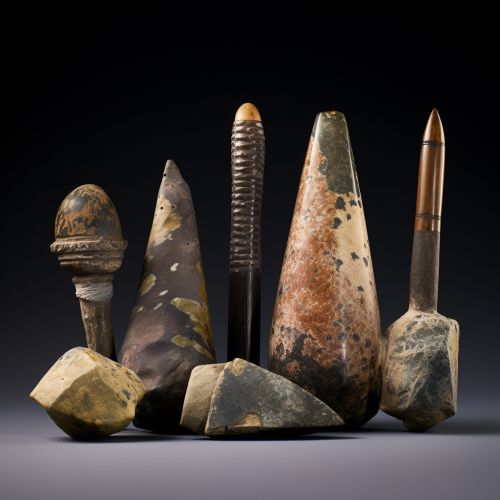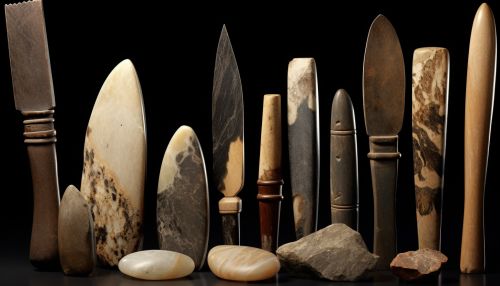Neolithic Age
Overview
The Neolithic Age, also known as the New Stone Age, was a significant period in human history that marked the transition from hunter-gatherer societies to settled farming communities. This period is characterized by the development of agriculture, the domestication of animals, and the production of polished stone tools and pottery. The Neolithic Age is considered to have begun around 10,000 BCE in the Middle East and later in other parts of the world.
Origins and Development
The Neolithic Age is believed to have originated in the fertile crescent region of the Middle East, particularly in areas that are now parts of modern-day Iraq, Syria, Lebanon, and Israel. The shift from hunting and gathering to agriculture is often referred to as the Neolithic Revolution. This transition did not happen overnight but occurred gradually over thousands of years. The exact reasons for this shift are still debated among scholars, but it is generally believed that climatic changes, population pressure, and the availability of wild grains and animals suitable for domestication played a significant role.
Agricultural Practices
The development of agriculture was one of the most profound changes during the Neolithic Age. Early Neolithic farmers cultivated a variety of crops, including wheat, barley, lentils, peas, and later rice and maize. They also developed irrigation systems to water their crops. The domestication of animals such as goats, sheep, pigs, and cattle provided a reliable source of meat, milk, and hides. The surplus food produced allowed populations to grow and settlements to expand, leading to the development of larger communities and eventually civilizations.
Technological Innovations
The Neolithic Age saw significant technological innovations. The production of polished stone tools, including axes, adzes, and chisels, represented a major advancement over the rough stone tools of the Paleolithic Age. The invention of the wheel, plow, and sailboat also occurred during this period. Additionally, the Neolithic Age saw the development of pottery, weaving, and the construction of permanent dwellings.


Social and Cultural Changes
The shift to settled farming communities during the Neolithic Age brought about significant social and cultural changes. The increased food production led to population growth and the development of more complex social structures. The division of labor became more pronounced, with some individuals specializing in tasks such as tool-making, pottery, and weaving. The Neolithic Age also saw the emergence of religious practices, with evidence of burial rituals and the construction of megalithic structures such as Stonehenge.
End of the Neolithic Age
The end of the Neolithic Age varied from region to region, but it is generally considered to have ended with the advent of metalworking and the beginning of the Bronze Age. In the Middle East, this transition occurred around 3300 BCE with the development of copper smelting. In other parts of the world, the Neolithic Age continued until much later. For example, in parts of the Americas, the Neolithic Age persisted until the arrival of Europeans in the 15th and 16th centuries CE.
